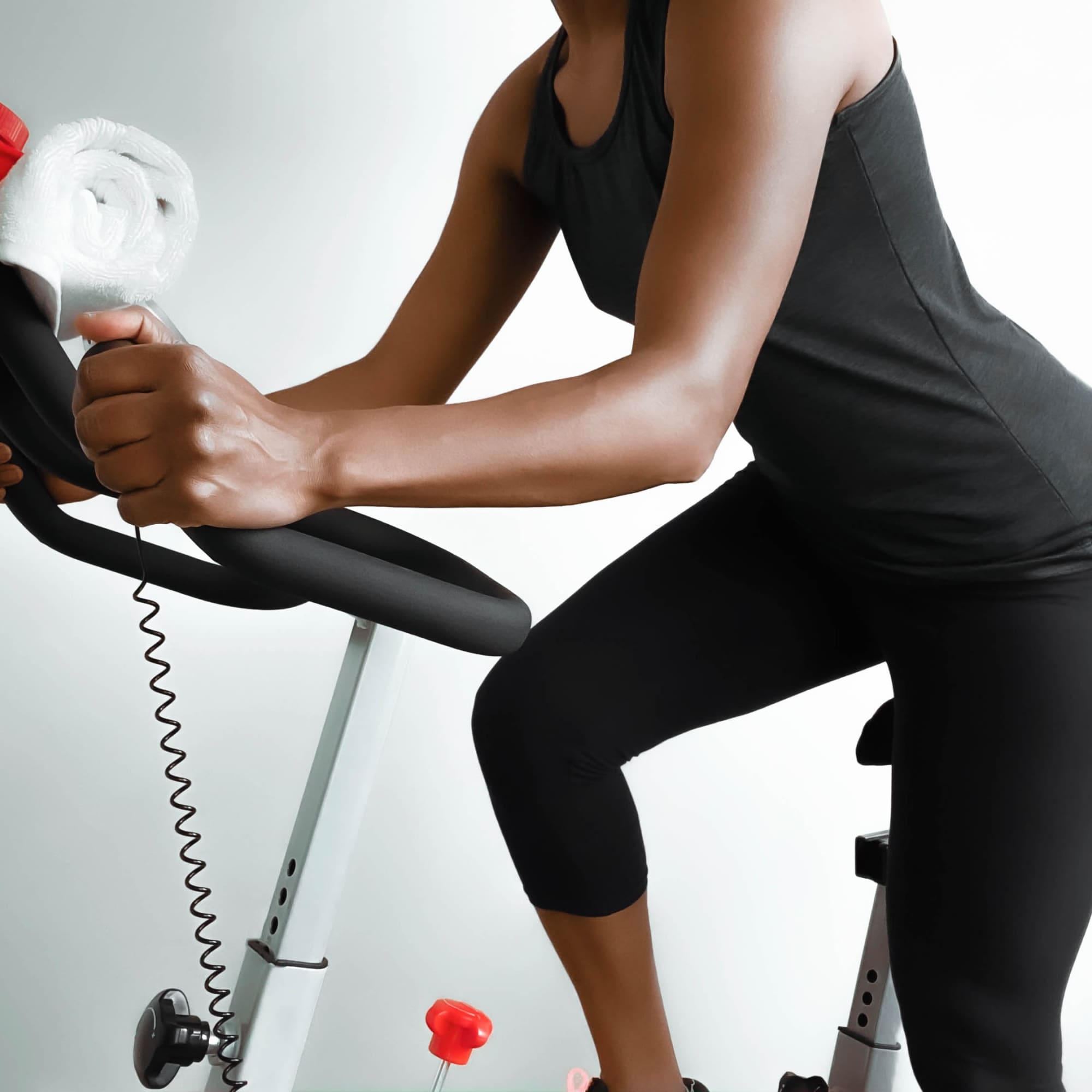
- POPSUGAR Australia
- Fitness
- A Trainer's Tips For Preventing Cycling-Induced Knee Pain
A Trainer's Tips For Preventing Cycling-Induced Knee Pain

Indoor cycling is a great low-impact activity for when your knees are feeling worn out – but before signing up for your next virtual class, know that it’s not a foolproof means of relief.
While indoor cycling doesn’t involve a significant amount of force on the joints, knee pain can derive from improper saddle placement, notes Erika Shannon, an ACE-certified personal trainer, director of Fitness at MYXfitness, and a former SoulCycle instructor.
“Sometimes, if your seat is too close to the handlebars or your saddle is too low, you end up front-loading your joints,” Shannon says.
On the other hand, if your saddle is too high and far back, you may feel pain in the back of your knees, Shannon elaborates. In this position, your hamstrings are at risk of being pulled, she adds.
Related: Studio Cycling Is My Favorite Workout, and Sorry, I’m Not Going to Stop Doing It
When something doesn’t feel right about your positioning, make sure to speak up. It’s your virtual instructor’s job to make sure you’re riding safely.
You know you’re practicing proper form if your seat falls at your hip bone when standing up. Keep in mind that your legs should be fully extended except for a slight bend in the knee when sitting on the saddle.
If you’re confident saddle placement isn’t triggering your pain, Shannon notes that the repetitive motion of peddling at a high resistance can add stress to the front of your knees, too. Tight quads and IT bands can also impact your leg alignment while pulling the kneecap into a compromised position.
Related: An Instructor Gets Real on Why You Aren’t Seeing Results From Indoor Cycling
Overall, listening to your body is key. Shannon points out that the knee is the midway point between the lower back, hip, and ankle, which is why knee pain can stem from those parts of the body. Building up core and glute strength with some cross-training (which in return supports the lower back and pelvis) will help prevent an overuse injury.
Post-workout recovery is an integral part of staying healthy, too. Shannon insists on grabbing the foam roller and going to work on your legs after every workout session to prevent further pain.
Click here for more health and wellness stories, tips, and news.

